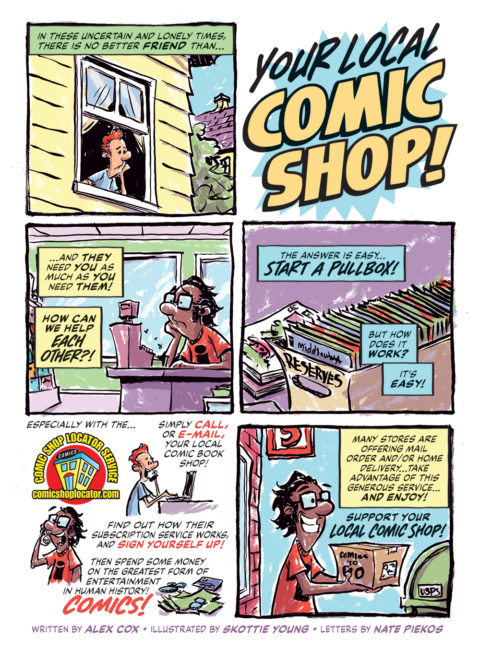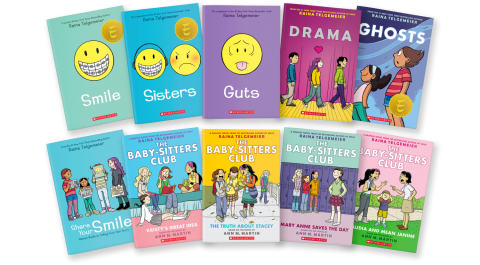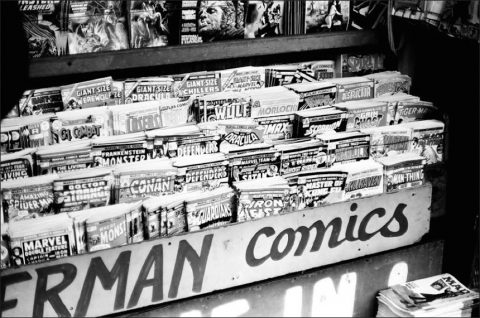There’s been a lot of talk this year about large comic sites, comics journalism and not making money. Comic Book Resources last week changed their design and brand to CBR. Augie De Blieck Jr. had an excellent write up about it called The End Of Big Comic Book Journalism that makes some salient points. Here’s a clip:
When an ad-supported website needs to build an audience to sell to advertisers, where will they get the numbers necessary to bring in a real ad network? It’s not going to be from comics.
Thus, ComicBook.com barely even covers comic books, but at least it’s adding comics content, not removing it. I should know – I’m part of that “barely.” I half expect a rebranding to “CB.com” soon, but I doubt Career Builder is going to give up that domain anytime soon for any amount of money. Not even stupid Marvel Cinematic Universe money.
You can’t expect to operate a “comic book” website at scale without forgetting about comics and covering everything else, instead. “Batman: Arkham Asylum,” the video game, sold something like 6 million copies. Should your website cover that video game or the latest issue of “Nightwing” and its 30,000-ish readers? Guess which one will attract more eyeballs? Guess where Google will rank you for each keyword phrase? Guess who’ll pay you to put their ads in front of the most number of people?
Hint: Nobody’s paying for the big spending Nightwing contingent of comic book fans.
The web is a numbers game. A vicious ad-driven numbers game. That’s all that counts.
Big comic book websites are dying, and that’s because they can’t make enough money from advertising to keep the lights on. The number of “big” all encompassing sites has been shrinking, and very few are left that pay their writers.
So why aren’t comic book publishers paying to advertise on comic book sites? Either because they don’t have to or they can’t afford to. Companies figured out years ago that print advertising was on the ropes and they moved to sponsoring blog reviews; pay twenty sites to review your product for a fraction of a single print ad and get it looked at by hundreds of thousands of people. And that works because of the diversity of the internet and its ability to focus on one topic. The birth of the Mommy blog last decade allowed collectively for companies to target influential buyers of children’s products: pay twenty sites $200 each to run a series of posts about your product, or sink that money into one print ad.
This concept has evolved even further with comic book websites. There are hundreds of medium to small comic book websites run by individuals or teams who are passionate about comics, but don’t get paid and don’t make any money doing it. Comic Book Daily doesn’t make enough money from advertising to pay for its hosting, let alone pay writers.
DC pulled their media relations focus to their own site a few years ago and have several people working full time to post there and all social media platforms. The same for Marvel, Image and practically every other publisher.
You start a comic book website, get in touch with their PR people and get signed up to the press list. This allows you to receive all their press releases. Depending on the publisher you may also get access to PDF copies of comics; no, not Marvel or DC. This way you get updated news sent to you directly and get free digital comics for reviewing on your site. And that’s all you’re going to get, but for most comic fans that’s far more than they could wish for. I speak from experience. Unless you’re Rich Johnston, who gets lots of free stuff.
These publisher tools allow sites to publish the same press releases as everyone else, all on the same day. A lot of them focus on that week’s hot items: new books for that Wednesday. News and weekly comic reviews have become the norm, all providing free advertising and product placement for publishers with little cost.
Here’s a list of sites DC provided preview comics to a few weeks ago under the header Online Sneak Peaks; it’s one per site, but to make it sound salient they are “exclusive” previews.
- COMIC BOOK RESOURCES ran an exclusive preview of AQUAMAN #5
- COMICBOOK ran an exclusive preview of BATGIRL AND THE BIRDS OF PREY #1
- MULTIVERSITY COMICS ran an exclusive preview of BATMAN #5
- 13TH DIMENSION ran an exclusive preview of DOCTOR FATE #15
- NERDIST ran an exclusive preview of GREEN ARROW #5
- GRAPHIC POLICY ran an exclusive preview of GREEN LANTERNS #5
- REVELIST ran an exclusive preview of HARLEY QUINN #2
- CRAVE ONLINE ran an exclusive preview of JUSTICE LEAGUE #3
- GEEKS WORLD WIDE ran an exclusive preview of LEGENDS OF TOMORROW #6
- NEWSARAMA ran an exclusive preview of NIGHTWING #3
- DC COMICS also ran a preview of NIGHTWING #3
- INVERSE ran an exclusive preview of SCOOBY APOCALYPSE #4
- COMICS ALLIANCE ran an exclusive preview of SUICIDE SQUAD #1
- HITFIX ran an exclusive preview and interview with Steve Orlando for SUPERGIRL: REBIRTH #1
- COMICOSITY ran an exclusive preview of SUPERMAN #5
- AV CLUB ran an exclusive preview of TEEN TITANS GO! #17
Note they include their site in the list of exclusive previews.
Every site listed is fighting for scraps, to have that “exclusive” preview. Why would DC pay any of these sites to advertise when they clearly have a captive press market? To be fair to DC, would spending money advertising on these sites boost awareness for any comic book more than the press releases, previews and reviews already being published for free?
And that leads us to the end of big comic book journalism. It’s that Jerry Maguire moment, when focus and attention needs to be on one or two areas and not multiple.
There are five or so very large comic news sites covering every possible new piece of comic news on a daily basis. We don’t need to only go to these websites for our comic book fix: these are the surface layer, and for the deep dive into a topic you need to look elsewhere. Why don’t we follow ten, fifty or two hundred specialty sites that focus on one aspect of collecting we enjoy. A voice you identify with and enjoy. Social media allows us to follow these kind of sites, as does good old RSS feeds.
Let’s get to concrete examples. I’ve been with Comic Book Daily for six years and have tried pretty much anything comic book related to get hits. We’ve moved from a catch all site to slowly focusing on comics nostalgia in two areas: comic book investing and Artist Edition books. Our hits have remained the same while focusing on these two areas, and our revenue has increased. We make money on eBay and Amazon links; when you click on the eBay ad we show at the bottom of Undervalued Spotlight or the Amazon ad at the bottom of reviews we make a small percentage on your purchase.
The Artist Edition focus is completely me: I do all the work on the Index, I buy all the books to review, and I write all the previews, reviews and news pieces. It’s a passion of mine, it’s a very, very small portion of the comic book market and as such we’re the lead site for Artist Editions. These books sell 300-2000 copies so we’re talking very low numbers. The challenge is to further monetize these niches, but there still is no incentive for any publisher to pay for advertising. It seems the only revenue is going to come from readers buying books by clicking on ads or links from our site. Perhaps Patreon and its style of $1 or $2 a month backing by readers is the way to support niche interest sites. We’ll see.




Unfortunately, comic book journalism is a microcosm of the greater changes taking place in the world. Even mainstream news often comes from one source and content is treated like any other product. Advertising, news and information is a blur and people are able to cherry pick what they consume which creates an isolating effect.
If 30,000 Nightwing readers are not big enough, then it’s going to become a very homogeneous world where everyone shops at Walmart, drinks Coke and watches sensationalistic material on Fox because it really is all about the numbers.
I always found it odd (and sad) that I never saw comics advertised anywhere else except in comics, and now on comic blogs. Preaching to the choir, as it were.
Publishers who say there’s no money to advertise in other medium get what they pay for, tiny increases in readership. Without reaching other avenues of potential readership, how do you expect to grow?
I have yet to see a single superhero movie in the past couple years advertise the CSLS or advertise the comic books themselves. When the film companies that own the comics won’t promote the comics, you’ve got some real problems happening there.
And as hardocre as I am, I never go to the big comic news sites. Too many ads.
Great piece Scott.
A huge thank you for your Artist Edition focus! My wallet doesn’t thank you, but I’ve read every review multiple times and find it a very valuable resource.
Jay — The publishers are such a tiny part of the quarterly report for both Marvel and DC that they have no real incentive to do anything more for them than make movies based on their IP. And the profit margins on comics are so tiny that advertising for them is a waste of money. Effectively, the movies are the best advertising for the comics, but then nobody picks up the baton after that — the Direct Market retailers also work at such razor thin margins that they can’t go out and advertise, either.
Publishers advertise to the choiir because they’re a warm market that can get them immediate results for low costs. It’s a waste of money in the short term to pay for ads to get in front of millions of people, 99.999% of whom won’t care.
Yes, this is all terribly short term thinking. Such is business life these days. Everyone’s in survival mode. (Comics don’t sell anymore. Tentpole movies are flopping left and right. Who has the money that they can justify spending for long term profit?)
The whole thing is a mess. There are days I don’t understand how it works at all.
Fantastic comment Augie… and right on the money. °°High fives all around°° Short term thinking is how we all got here. We need more problem solvers.
“Comics don’t sell anymore”?
I respectfully disagree. We sell a lot of comics and the industry has had nothing but increased growth for the past 7 years, topping over 1.2 billion in annual sales for the first time since the early 90s. Reaching the untapped audience is easier than most think but it requires some time and effort, both of which a majority of retailers and publishers do not wish to put forth.
As for tentpole movies flopping, granted DC’s movies are making as much profit as Warner would like but they are not unprofitable. And clearly Marvel has found a formula that works (who’s though Deadpool would gross $1 billion worldwide). Star Wars will chug along and so on and so forth.
It’s easy to be negative and just throw your hands up but I choose to continue the push to grow the industry as it has been growing and introduce more people to comics and inspire more people to make comics. It’s hardly any more a mess than any other industry, it’s simply a different business model that, when practiced well, functions well.
@Jay – “Dazzler” #1 sold 400,000 copies in the 80s. Comics of that era would have been canceled if they sold the number that an average month’s #2 book sold. And most independent books don’t sell more than 10,000 copies a month. There are a few which do in excess of that, but they drop off pretty quickly.
As for movies, look at the numbers brought in by Ben Hur, Alice through the Looking Glass, the latest Star Trek movie, Zealander 2, Whiskey Tango Fox Trot, The Hunstman 2, or Pride and Prejudice and Zombies, Ghostbusters 2, Superhero movies are still working, even when they are awful, (Suicide Squad, Batman vs. Superman), but even that money train will run out of steam eventually.
But I agree, it’s a fight worth fighting, because I want it to stick around. It needs to grow its audience, and we’ll take every new reader from wherever we can find them. Hopefully, they’ll stick around long enough to make it all work. Going back to what I said in my original article: The Raina Telgemeier impact could be HUGE in a few more years…
Comparing individual books sales of today to that of any books from 80s is bad math. You need to look at the total number of titles published in a month. Sure Dazzler did well but when there’s only 130-150 choices out there against today’s 500 plus (we stock over 650 monthlies at our shop), then it is far easier to sell that many.
The total volume of books, coupled with their genre variety, cross branding potential, and diversity only makes the market stronger than it has ever been. However, to help grow the audience, digital needs to keep reaching new readers and the companies that own publishing houses need to use their other media to promote comics. And Raina’s impact is already huge, as is Tony Cliff’s, Gene Leun Yang, Faith Erin Hicks, and many more. It’s just up to us retailers to capitalize on their good works.
Jay, I would go even further and take a birds eye view in order to see all the moving parts. If individual sales are misleading, why stop at total volume? Zoom out further to see the various global trends. There is absolutely zero evidence that the comic market is growing or that we have more readers today. The stats I’ve looked at suggest the opposite… which is why we have constant reboots of main stream titles. Put an iPad or a comic in front of a kid and he’ll most likely choose the iPad,
Speaking of movies… some interesting stats here… latest by MPAA from 2015:
http://www.mpaa.org/wp-content/uploads/2016/04/MPAA-Theatrical-Market-Statistics-2015_Final.pdf
But that doesn’t mean the kid isn’t reading a comic on the iPad…
Most iPads have video games, access to YouTube, FaceBook and music on them. Given this plethora of choices… I’m going to assume kids are to distracted to sit quietly and read a digital comic.
Looking at individual sales when they are 30 years apart is misleading. The industry is completely different from top to bottom.
That’s was my point.
There is lots of evidence of new readers and reboots are not necessarily because of a desperate appeal to get even more. It’s far more complex than that.
Speaking of readership, here are some trends in reading;
http://icv2.com/articles/columns/view/35445/reading-between-lines-pews-2016-reader-survey-favorable-trends-comics
My favourite quote;
“One of the more optimistic findings in the Pew data is that young adults are somewhat more likely to have read a book in the past year than their elders. 80% of 18-29 year-old respondents cracked the cover of a book in 2015, compared to 67% of those 65 and older.”
A good sign.
I guess I stand corrected. If a comic journalist writing for a comic website interprets a phone survey of 1520 American adults as a sign that comic market is stable… who am I to argue? I think we can credit the DC Rebirth here…
Sarcasm; how refreshing.
Okay… I apologize for the sarcasm but I think we’re all adult enough to recognize spin when we read it. The study was more about print vs digital and had nothing to do with comics. The question was, how many of the 1520 people read at least 1 book in the past year. I wonder what the drop off would be if it was 2 books, 5 books, or 10 books. It takes 10 mins to read 1 comic. Does it even count? I’m not trying to “poo poo” all over comics but lets be real.
I was being real. I understood the article for what it was providing. There’s tons of pure numbers data out there to support an upswing in the comics industry, this was just another take on a SIMILAR area of discussion.
S’okay though. You clearly have your opinion on the comics industry and no amount of discussion with you is going to benefit anyone.